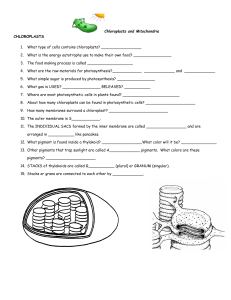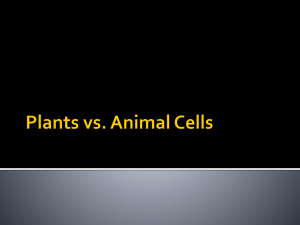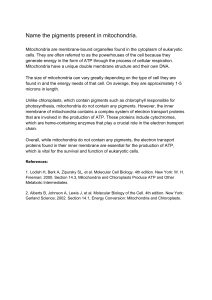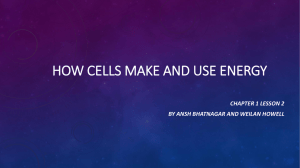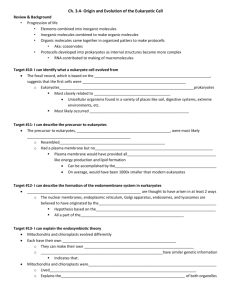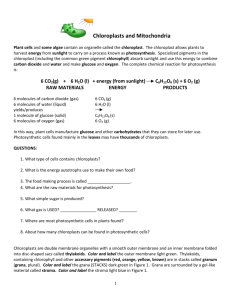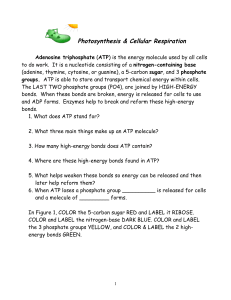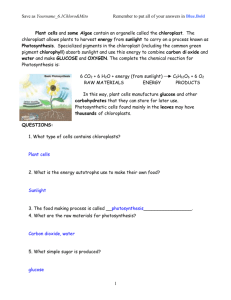Chloroplasts and Mitochondria CHLOROPLASTS What type of cells
advertisement
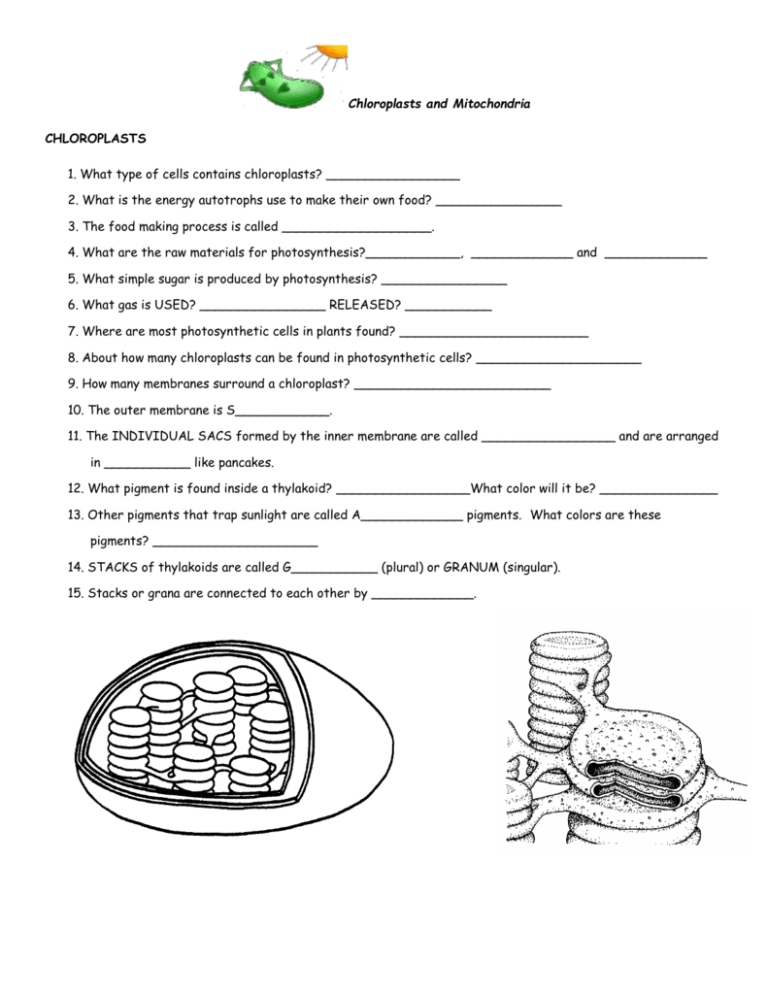
Chloroplasts and Mitochondria CHLOROPLASTS 1. What type of cells contains chloroplasts? _________________ 2. What is the energy autotrophs use to make their own food? ________________ 3. The food making process is called ___________________. 4. What are the raw materials for photosynthesis?____________, _____________ and _____________ 5. What simple sugar is produced by photosynthesis? ________________ 6. What gas is USED? ________________ RELEASED? ___________ 7. Where are most photosynthetic cells in plants found? ________________________ 8. About how many chloroplasts can be found in photosynthetic cells? _____________________ 9. How many membranes surround a chloroplast? _________________________ 10. The outer membrane is S____________. 11. The INDIVIDUAL SACS formed by the inner membrane are called _________________ and are arranged in ___________ like pancakes. 12. What pigment is found inside a thylakoid? _________________What color will it be? _______________ 13. Other pigments that trap sunlight are called A_____________ pigments. What colors are these pigments? _____________________ 14. STACKS of thylakoids are called G___________ (plural) or GRANUM (singular). 15. Stacks or grana are connected to each other by _____________. MITOCHONDRIA 1. Why are mitochondria called the powerhouse of the cell? ___________________ 2. What cell process occurs in the mitochondria? _________________ 3. Why do some cells have MORE mitochondria? ______________ Give an example. ___________________ 4. What simple sugar is broken down in the mitochondria? ____________________ 5. The process used to release the energy from glucose is called _________________________________. 6. The reactants of respiration are ____________________ and _____________________ 7. The products of respiration are _______________, _________________, and ___________________ 8. Where does the energy in glucose come from ORIGINALLY? __________________________________ 9. Where is this energy stored in glucose? ______________________________________ 10. Why is cellular respiration an aerobic process? _________________________________ 11. What energy is released when the chemical bonds of glucose are broken? _________________________ 12. Name two other organelles besides the mitochondria that contain DNA and have a double membrane. ____________________________________ and __________________________________ 13. Describe the outer membrane of the mitochondria. ______________________________________ 14. Why is the inner mitochondrial membrane folded? ______________________________________ 15. What are the folds called? ________________ ATP 1. What does ATP stand for? _______________________________________________ 2. What three main things make up an ATP molecule? ________________, ________________ and ___________________ 3. How many high-energy bonds does ATP contain? _______________________ 4. Where are these high-energy bonds found in ATP? _______________________ 5. What helps weaken these bonds so energy can be released and then later help reform them? ___________ 6. When ATP loses a phosphate group __________ is released for cells and a molecule of _________ forms.
